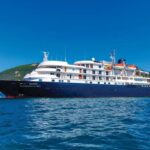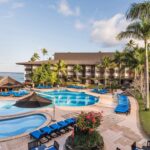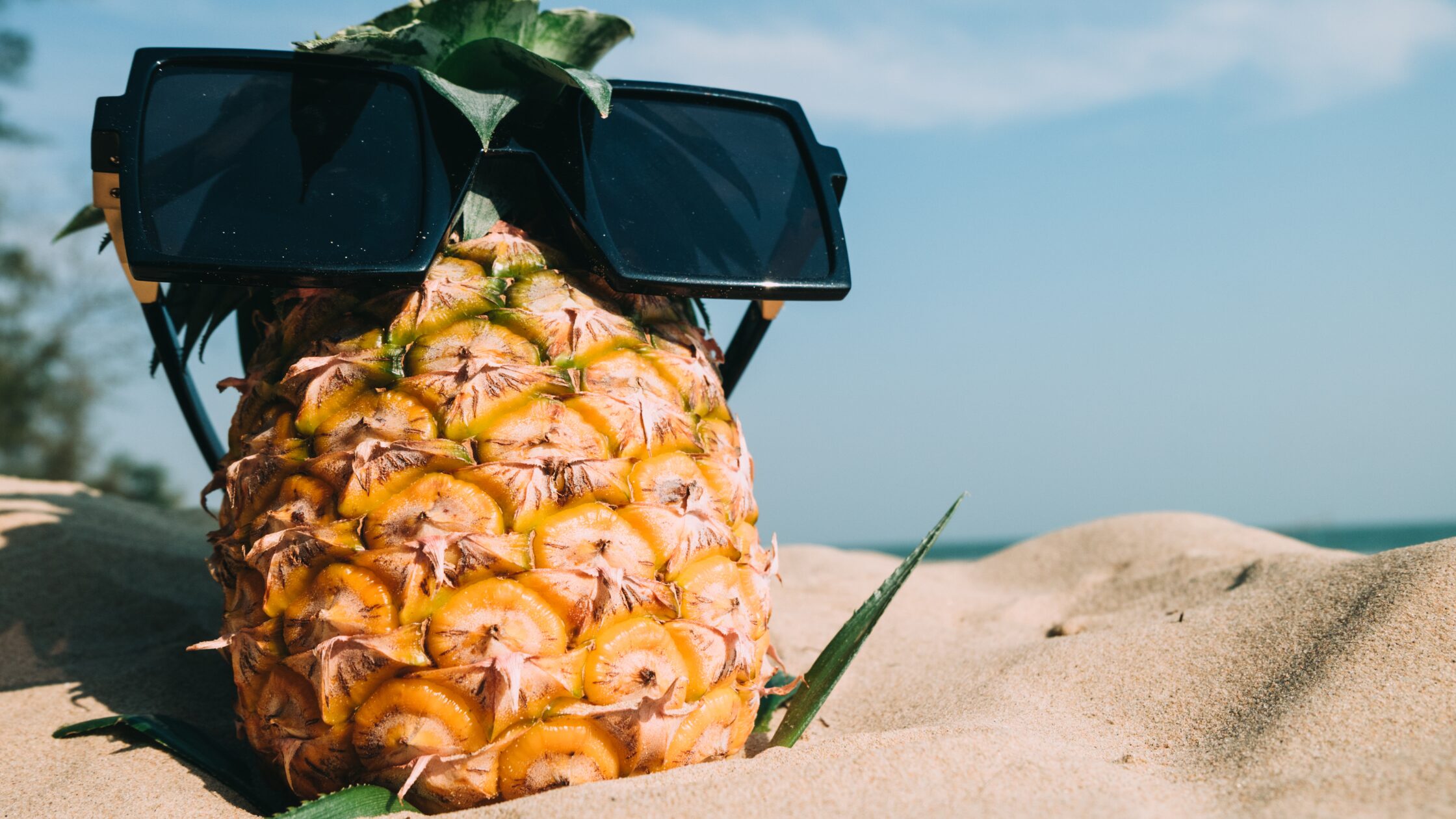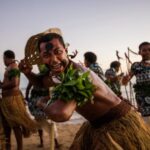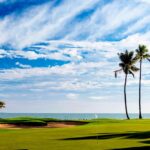If you are planning to visit Fiji, you might be wondering how to explore this beautiful island nation. Fiji is divided into four major divisions: Central, Eastern, Northern, and Western. Each division has its own unique culture, history, and attractions. In this blog post, we will give you an overview of the regions of Fiji and what you can expect to see and do in each one!
Understanding Fiji’s Geography and Regions
Fiji’s archipelago offers a diverse range of environments, from volcanic islands with mountainous backdrops to serene beaches fringed by coral reefs. Understanding these areas enriches your experience in this tropical haven.
Major Islands and Archipelagos
Fiji, a South Pacific country, is an archipelago consisting of more than 300 islands. Among these, the two largest islands, Viti Levu and Vanua Levu, are home to the majority of Fiji’s population.
- Viti Levu: This is Fiji’s largest island and hosts the capital, Suva, on its southeast coast. It is also where you’ll find the international gateway, Nadi, and the picturesque Coral Coast.
- Vanua Levu: Less frequented by tourists, Vanua Levu offers lush tropical forests and is known for its sugar cane and copra farms.
- Taveuni: Known as the ‘Garden Island’, Taveuni is famed for its flora and is a diver’s paradise with vibrant coral reefs.
- Kadavu: A typical setting for adventurers seeking out nature and traditional Fijian culture, Kadavu is renowned for the Great Astrolabe Reef.
The archipelago also includes several smaller groups such as the Mamanuca and Yasawa Islands, north-west of Viti Levu, known for their stunning beaches and resorts. The Lau Group, to the east, is a string of islands with untouched beauty, while the Lomaiviti Group includes historical Ovalau with its colonial past.
Key Geographic Features
Fiji’s islands are primarily of volcanic origin, creating dramatic landscapes. The presence of extensive tropical forests, rolling hills, and valleys adorned with palm trees characterises much of the interior regions of the larger islands.
- Beaches: The Beaches of Fiji are among the main attractions, offering white sand and crystal-clear waters. The Coral Coast on Viti Levu is particularly famous for its extensive shoreline and resort facilities.
- Coral Reefs: Fiji’s surrounding waters are teeming with life, thanks to the abundant coral reefs. These are hotspots for diving and snorkelling, providing up-close encounters with marine biodiversity.
- Volcanic Features: While the islands are peaceful today, many of Fiji’s landscapes are shaped by their volcanic origins, leading to fertile soils and a stunning coastline.
Whether exploring the main islands or island-hopping through the smaller archipelagos, Fiji’s geography offers a wealth of natural riches and cultural experiences for you to discover.
Cultural and Historical Aspects of Fijian Regions
Fiji’s regions are rich in culture and history, reflecting a tapestry of indigenous Fijian, Indian, Polynesian, and European influences. Exploring cities, cultural hubs, and traditional society structures offers you a glimpse into Fiji’s multifaceted identity.
Cities and Cultural Hubs
Suva, the capital, is the most cosmopolitan city and quintessential cultural hub. Home to the Fiji Museum, it offers you insights into the country’s archaeological history dating back 3,700 years. Lautoka, known for its sugar cane industry, has a vibrant Indo-Fijian community and is a melting pot of cultural experiences. Nadi, the gateway to the islands, hosts an array of restaurants and bars, revealing the blend of aromatic Fijian, Indian and Chinese cuisines.
Savusavu is quaint yet charming with a reputation for its hot springs and pearl farming. Meanwhile, Levuka on Ovalau Island, Fiji’s former capital, offers you a walk through time with its well-preserved colonial buildings and historic sites.
Cultural Hotspots:
- Suva: Fiji Museum, diverse dining scene, and university
- Lautoka: Sugar City, with a rich fusion of traditions
- Nadi: Main international airport, vibrant marketplace, gateway to beaches
- Savusavu: Known as the “hidden paradise” of Fiji
- Levuka: UNESCO World Heritage site, offers heritage tours
Traditional Structure of Society
In Fijian society, the vanua (land and social unit) is central to community life, governed by a traditional leadership system that respects chiefs, turaga-ni-koro (village headmen), and elder councils. This hierarchical system is evident through the provincial council and the roko tui (provincial chiefs) as well as throughout the 14 provinces or yasana of Fiji. Here, social protocols and ceremonies remain integral to societal function.
The tikina, a division of the province, or yasana, is often comprised of several villages, with each village led by a turaga-ni-koro. The titles and roles within this structure, such as roko tui, adi (for women), and ratu (for men) are hereditary. Understanding this structure provides you with important context for how communities are organized and how traditional and modern influences intersect.
Provincial Structure:
- Province (Yasana): Governed by a roko tui
- Tikina: Subdivision of provinces, consists of villages
- Village: Led by turaga-ni-koro
Traditionally, this structure has been the backdrop against which Fijian culture and protocols are observed, maintaining order and community cohesion. It’s a system that has imbued Fijian society with its sense of identity and continuity amidst changing times.
Fiji’s Economy and Natural Resources
Fiji is a vibrant island nation with a diverse economy heavily reliant on its natural resources, including sugarcane and fisheries, and the infrastructure that supports their exportation.
Primary Industries and Exports
Fiji’s economy is underpinned by a few core industries, primarily agriculture and mining. Sugarcane is the backbone of the agricultural sector, predominantly grown in regions such as Viti Levu, Vanua Levu, especially in the areas of Nadroga-Navosa, Cakaudrove, Bua, and Macuata.
- Sugarcane: Vital for exports and local employment.
Gold mining is also significant, particularly on the island of Viti Levu. This precious metal represents another key export for Fiji. Besides these, offshore fishing contributes notably to the economy, tapping into the abundant marine life within Fiji’s territorial waters.
- Gold: Found mainly in Viti Levu.
- Fish: Vital for both local consumption and export.
Agriculture and mining together form the core of your employment opportunities and drive the export numbers that Fiji relies on for sustaining its trade balance.
Transport and Infrastructure
The Nadi International Airport, the primary gateway to Fiji, is pivotal to both the tourism industry and the transport of exports, which are essential components of Fiji’s economy. Its presence has transformed Nadi into a significant hub for both international visitors and trade.
| Key Transport and Infrastructure | Description |
|---|---|
| Nadi International Airport | Central hub for air transportation |
| Ports | Essential for shipping exports like sugarcane, gold, and fish |
| Roads | Connect major production areas to ports and the airport |
Fiji’s system of ports and roads is fundamental to the movement of goods. These infrastructures link the tropical forests and the production districts directly to trade routes and contribute to efficient economic operations. For instance, Fiji’s road network facilitates the transfer of goods from the farm to your table or to the ships that carry Fijian products to the world.
By understanding these sectors and the infrastructure that supports them, you get a clearer picture of Fiji’s economic landscape and what drives this Pacific Island’s financial pulse.
Tourism and Activities in Fiji
Fiji’s diverse regions offer an array of experiences, from lounging at luxurious resorts to embarking on cultural adventures. Whether you’re interested in underwater exploration or interacting with local traditions, you’ll find activities to enrich your stay.
Popular Destinations and Resorts
- Nadi: Often your first encounter with Fiji, Nadi hosts the main international airport and offers quick access to several resorts and beaches.
- Denarau Island: A premium resort hub with golf courses and high-end accommodations, located just a short drive from Nadi.
- Mamanuca Islands: Famous for their crystal-clear waters, white sandy beaches, and luxurious resorts, these islands are excellent for snorkelling and relaxation.
- Yasawa Islands: A more remote option with stunning vistas, pristine beaches, and boutique resorts, where you can unwind far from the crowds.
- Beqa Island: Known for the Beqa Lagoon and its barrier reef, it’s an ideal destination for diving enthusiasts.
- Kadavu Island: Home to the Great Astrolabe Reef, providing some of the most spectacular dive sites with rich marine life.
- Pacific Harbour & Beqa: Referred to as the adventure capital, here you can experience a range of activities including diving with sharks.
Adventurous and Cultural Experiences
- Sigatoka: Take a safari down the Sigatoka River to discover traditional Fijian villages and learn about local customs.
- Rakiraki & Nananu-i-Ra Island: Engage in windsurfing or kitesurfing, or simply enjoy the serene beaches and waterfalls nearby.
Savusavu: Known for its hot springs and hidden waterfalls, it’s a place where you can soak in nature’s bounty and visit nearby pearl farms.
- Taveuni & Bouma National Heritage Park: Explore the famed Tagimoucia flower, hike to waterfalls, and traverse rainforest trails.
- Cultural Experiences: Learn about Fiji’s rich heritage through village tours, kava ceremonies, and local markets, particularly in the regional hub of Suva.
- Rotuma: For a truly off-the-beaten-path experience, venture to this northern Fijian island with unique culture and untouched landscapes.
Remember to check local tidal schedules before engaging in reef activities, as low tide can significantly affect access and visibility. Always dive and explore responsibly to protect the natural beauty of Fiji’s ecosystems.
